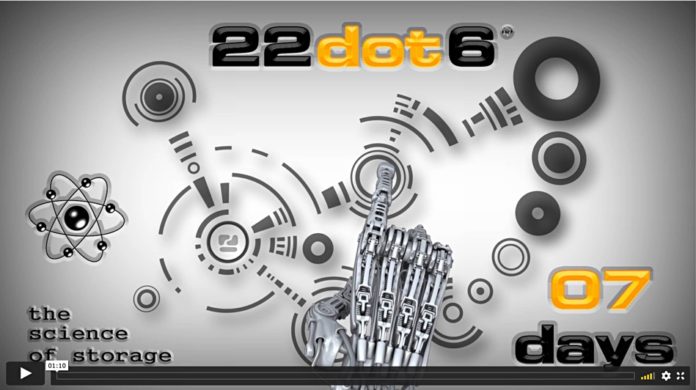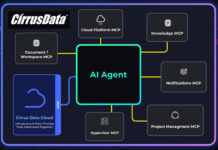A startup called 22dot6 has exited stealth mode, and revealed some ambitious details on Valence, which the biz has dubbed a Transcendent Abstracted Storage System (TASS). The firm says Valence enables users to access, move, manage, and protect all data assets transparently. It claims users can utilize any available file or object storage resource, regardless of the hardware manufacture, physical, virtual or cloud location, protocol, or platform.
There is no Valence availability or pricing information as yet.
The idea behind TASS is to unify physical, virtual, on-premises, and cloud storage resources locally and globally. The firm claims disparate storage resources are managed as a single entity and accessed using a metadata engine – seemingly in a similar way to Hammerspace. Users see all their storage as it it were public cloud storage.
22dot6 founder and CEO Diamond Lauffin said: “Once every decade or so, breakthroughs in computing trigger an innovative leap in the way we manage, store, protect and access our data. A software defined TASS architecture is not theoretical and represents that type of leap.”
The Valence product comes either as storage software or installed in an appliance. The software can run on x86 servers, Windows tablets, and various other hardware platforms. The claims are quite extraordinary: administrators can manage billions of files and exabytes of data within a scale up/scale out architecture supporting a general compute HPC cluster of up to 60 data transport/access nodes per physical or virtual location and delivering data accessibility of 600-1200 GB/sec within a single global namespace.
Lauffin told us TASS can assimilate data from IBM, Isilon, Hitachi Vantara, and NetApp systems “in minutes,” and “can make an entire global infrastructure look like a single disk drive.”
TASS code
Blocks&Files understands the TASS code is ultimately derived from FileTek’s Storehouse software which provided large-scale data management and file storage virtualization, with a single namespace covering multiple aggregated storage silos.
Lauffin has a partnership with an unnamed engineering group and they have worked since mid-2014 to create a new Storehouse, developing co-owned technology.
Features
The feature and performance claims are extensive, to say the least:
- High availability – simultaneous file availability in a one-to-many node active/active configuration, guaranteeing 100 per cent utilization of any available storage resource.
- Parallel user access – all users can see and access all files in real time through all data transport nodes and every assigned network port simultaneously, regardless of location or resource.
- Predictive analytics – Valence eliminates hot-spots and hardware failure impact with machine learning, AI-based predictive analysis to manage data placement to meet performance and availability objectives.
- High performance – TASS isolates and separates metadata management, data analytics/profiling and data services from the processes of providing IOPS and managing throughput. Valence assigns these different tasks to dedicated CPUs and RAM, including SAS and PCIe board-level resources.
- Performance monitoring – Valence monitors performance in real time with predictive analysis and reporting to guarantee the maintenance of all user-defined objectives – read/write bandwidth, IOPS, and latency.
- Data protection – Valence provides the ability to configure all data protection services at an application, user and sub-file level. Integrated data cost analysis assigns the correct level of protection based on user definable metrics.
- Disaster Recovery – the software provides zero-RPO disaster recovery across locations
- Next-in-line accessibility – if a storage resource becomes unavailable, a file becomes corrupted, deleted or moved, Valence connects the user or application to the next logical copy of the file regardless of location.
- Replaced restore – Valence replaces file restore with immediate reacquisition and bypasses recovery through prevention.
- Active/Active – All sites can be considered as active site, sharing data in real time to any other site, and all sites can act as a primary site depending on the objective.
- Master File model – Valence incorporates a “Master File” model with global file awareness to provide both transparent disaster prevention and multi-site, active file accessibility.
- Tiering – Valence provides infinite intelligent tiering.
- Metadata management – Metadata-level management enables tagging, classification, and triggers policies based on any file, application, user or system associated attribute.
- Global indexing – there are global indexing, search and analysis tools, providing administrators native capabilities to visualize, analyse and profile files, users, activities, performance and availability, based on virtually any query regardless of where the data resides.
- Objectives – objectives can be set for cost optimization, performance, resiliency, availability, device and/or location including scheduled permission defined accessibility, with Valence using telemetry for monitoring and reporting status.
- Multi-tenancy – Valance can manage thousands of independent customers or internal departments isolated from each other through a unified, multi-location management console.
- Multi-location file lookup – using metadata stored in multiple locations.
- Archive – TASS supports off-line data management for archives like Amazon Glacier/tape providing location/device-aware file level security implementing GDPR regulatory, and extended compliance capabilities.
The firm
Lauffin co-founded and became 22dot6 CEO in January 2015, having been co-founder and chief sales and marketing officer for flash array vendor Storbyte between September 2016 and June 2020.
He has been the CEO of the Lauffin Group since October 2006. This is said to provide services including sales alignment and development; indirect channel adoption and expansion; product positioning, creation, and validation; sales and product pitch development; and new product and company launch advice.
Lauffin was veep for channel development from 2008 at storage virtualizer FileTek, which was bought by SGI in 2013. FileTek developed the Storehouse software.
He was a co-founder, senior EVP, and a director at Nexsan between January 2001 and the end of 2006. StorCentric bought Nexsan in August 2018. Before Nexsan, Lauffin was an EVP at tape library vendor Qualstar between 1993 and 2000. We understand Lauffin actually entered the computer industry in 1984.
Interested parties can visit the 22dot6 website and register to receive progress updates.
Bootnote: The name 22dot6 is derived from the density of osmium, which is a transition metal considered the densest naturally occurring element in the world.








